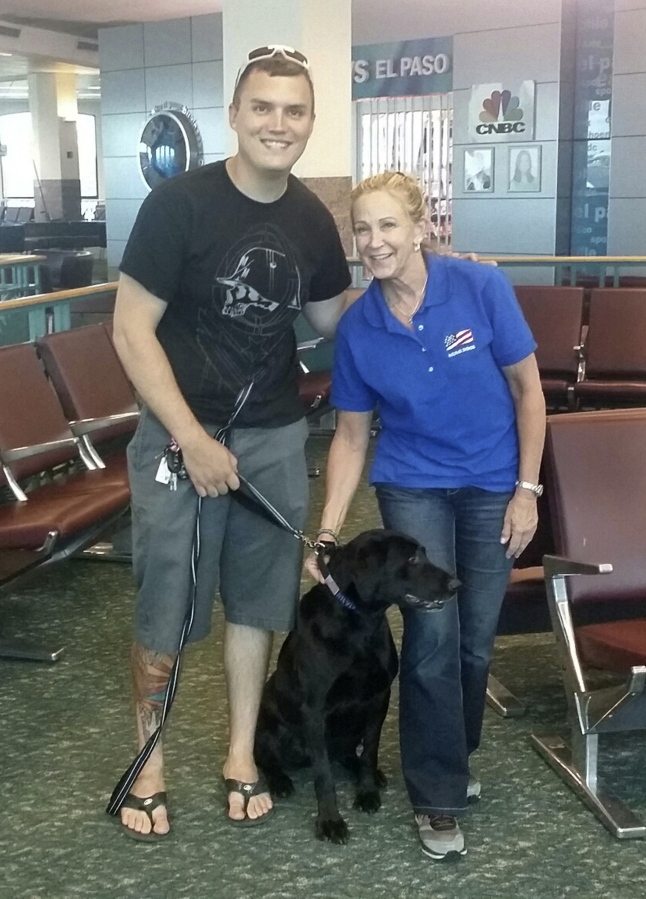ST. LOUIS — Derrek Green’s eyes lit up as the black Lab galloped across the airport corridor. He bent down, threw his arms out and embraced Zeva, the tail-wagging, retired military dog he had to leave behind two years earlier.
Molli Oliver’s eyes filled with tears.
Oliver is a United Airlines flight attendant who has taken it upon herself to reunite retired military dogs and their former handlers. Her mission started last year when she struck up a conversation with a soldier still hurting five years after parting ways with his military canine.
“I said, ‘Well, where is the dog? I’ll get him for you,’ ” Oliver recalled.
It was the start of a passion for Oliver. The recent reunion of Green and Zeva in El Paso, Texas, was her fifth homecoming.



